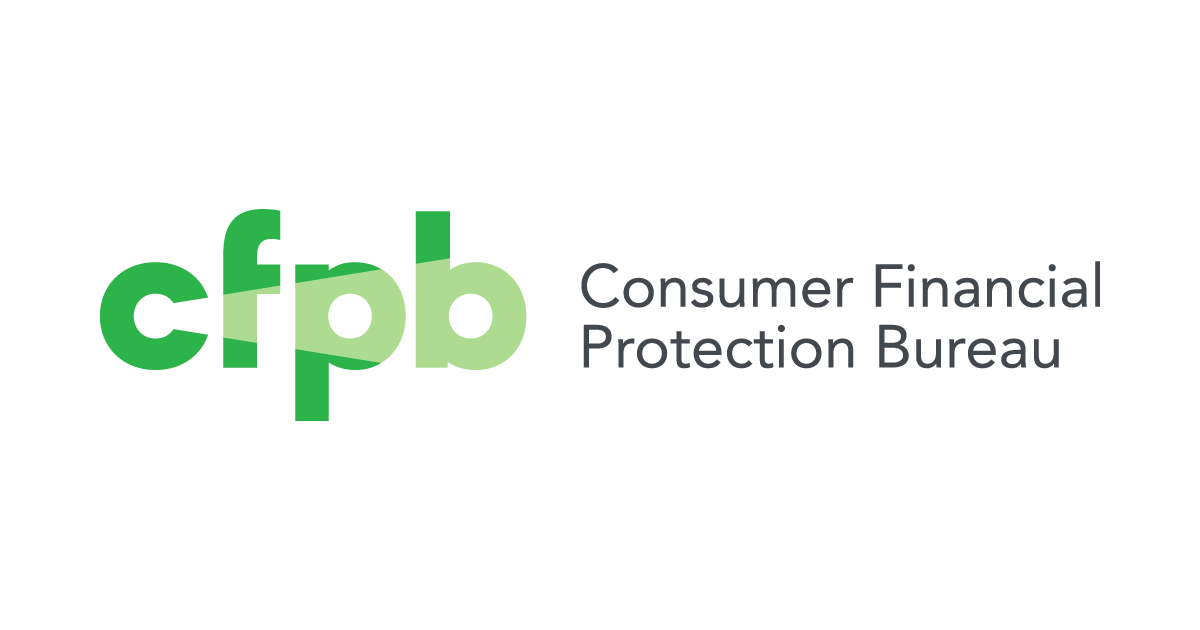The Federal Financial Institutions Examination Council (FFIEC) today announced the availability of data on mortgage lending transactions at 5,683 U.S. financial institutions covered by the Home Mortgage Disclosure Act (HMDA). Covered institutions include banks, savings associations, credit unions, and mortgage companies. Released today are loan-level HMDA data covering 2018 lending activity that were submitted on or before August 7, 2019.
The data include a total of 48 data points providing information about the applicants, the property securing the loan or proposed to secure the loan in the case of non-originated applications, the transaction, and identifiers. Many of the data points are available for the first time in the 2018 HMDA data. A complete list of HMDA data points and the associated data fields is found in Appendix A of the FFIEC’s Filing Instructions Guide for HMDA Data Collected in 2018. [1] Certain smaller-volume financial institutions are not required to report all of these data, pursuant to the Economic Growth, Regulatory Relief, and Consumer Protection Act (EGRRCPA). [2]
The HMDA loan-level data available to the public will be updated, on an ongoing basis, to reflect late submissions and resubmissions. Accordingly, loan-level data downloaded from https://ffiec.cfpb.gov/ at a later date will include any such updated data. An August 7, 2019 static dataset used to develop the observations in this statement about the 2018 HMDA data is available here https://ffiec.cfpb.gov/data-publication/. In addition, beginning in late March 2019, Loan/Application Registers (LARs) for each HMDA filer of 2018 data, modified to protect borrower privacy, became available at https://ffiec.cfpb.gov/data-publication/.
Understanding the Data
The 2018 HMDA data use the census tract delineations, population, and housing characteristic data from the 2011–2015 American Community Survey (ACS). In addition, the data reflect metropolitan statistical area (MSA) definitions released by the Office of Management and Budget in 2017 that became effective for HMDA purposes in 2018.
Caution should be used when comparing HMDA data across multiple years due to changes in HMDA definitions, values, and thresholds. Also, caution is required for certain geographic areas due to the changes in MSA and census tract boundaries and updates to the population and housing characteristics of census tracts, especially those that follow the decennial census and five-year updates based on the ACS data.
The HMDA data are the most comprehensive publicly available information on mortgage market activity. Among other uses, the data help the public assess how financial institutions are serving the housing needs of their local communities and facilitate federal financial regulators’ fair lending, consumer compliance, and Community Reinvestment Act examinations. For example, when these regulators evaluate an institution’s fair lending risk, they analyze HMDA data in conjunction with other information and risk factors, in accordance with the Interagency Fair Lending Examination Procedures available at https://www.ffiec.gov/PDF/fairlend.pdf .
HMDA data alone cannot be used to determine whether a lender is complying with fair lending laws. The data do not include some legitimate credit risk considerations for loan approval and loan pricing decisions. Therefore, when regulators conduct fair lending examinations, they analyze additional information before reaching a determination about an institution’s compliance with fair lending laws.
Observations from the 2018 Data [3]
For 2018, the number of reporting institutions declined by about 2.9 percent from the previous year to 5,683. The 2018 data include information on 12.9 million home loan applications. Among them, 10.3 million were closed-end, 2.3 million were open-end, and, for another 378,000 records, pursuant to the EGRRCPA’s partial exemptions, financial institutions did not indicate whether the records were closed-end or open-end. A total of 7.7 million applications resulted in loan originations. Among them, 6.3 million were closed-end mortgage originations, 1.1 million were open-end line of credit originations, and, pursuant to the EGRRCPA’s partial exemptions, 283,000 were originations for which financial institutions did not indicate whether they were closed-end or open-end. The 2018 data include 2.0 million purchased loans, for a total of 15.1 million records. The data also include information on approximately 177,000 requests for preapprovals for home purchase loans.
The total number of originated loans decreased by about 924,000 between 2017 and 2018, or 12.6 percent. Refinance originations decreased by 23.1 percent from 2.5 million, and home purchase lending increased by 0.3 percent from 4.3 million. [4]
A total of 2,251 reporters made use of the EGRRCPA’s partial exemptions for at least one of the 26 data points eligible for the exemptions. In all, they account for about 425,000 records and 298,000 originations.
From 2017 to 2018, the share of home purchase loans for first lien, 1-4 family, site-built, owner-occupied properties (1-4 family, owner-occupied properties) made to low- and moderate-income borrowers (those with income of less than 80 percent of area median income) rose slightly from 26.3 percent to 28.1 percent, and the share of refinance loans to low- and moderate-income borrowers for 1-4 family, owner-occupied properties increased from 22.9 percent to 30.0 percent. [5]
In terms of borrower race and ethnicity, the share of home purchase loans for 1-4 family, owner-occupied properties made to Black borrowers rose from 6.4 percent in 2017 to 6.7 percent in 2018, the share made to Hispanic-White borrowers increased slightly from 8.8 percent to 8.9 percent, and those made to Asian borrowers rose from 5.8 percent to 5.9 percent. From 2017 to 2018, the share of refinance loans for 1-4 family, owner-occupied properties made to Black borrowers increased from 5.9 percent to 6.2 percent, the share made to Hispanic-White borrowers remained unchanged at 6.8 percent, and the share made to Asian borrowers fell from 4.0 percent to 3.7 percent.
In 2018, Black and Hispanic-White applicants experienced higher denial rates for 1-4 family, owner-occupied conventional home purchase loans than non-Hispanic-White applicants. The denial rate for Asian applicants is more comparable to the denial rate for non-Hispanic-White applicants. These relationships are similar to those found in earlier years and, due to the limitations of the HMDA data mentioned above, cannot take into account all legitimate credit risk considerations for loan approval and loan pricing.
The Federal Housing Administration (FHA)-insured share of first-lien home purchase loans for 1-4 family, owner-occupied properties declined from 22.0 percent in 2017 to 19.3 percent in 2018. The Department of Veterans Affairs (VA)-guaranteed share of such loans remained at approximately 10 percent in 2018. The overall government-backed share of such purchase loans, including FHA, VA, Rural Housing Service, and Farm Service Agency loans, was 32.0 percent in 2018, down slightly from 35.4 percent in 2017.
The FHA-insured share of refinance mortgages for 1-4 family, owner-occupied properties decreased slightly to 12.8 percent in 2018 from 13.0 percent in 2017, while the VA-guaranteed share of such refinance loans decreased from 11.3 percent in 2017 to 10.2 percent in 2018.
The share of mortgages originated by nondepository, independent mortgage companies has increased in recent years. In 2018, this group of lenders accounted for 57.2 percent of 1-4 family, owner-occupied home-purchase loans, up from 56.1 percent in 2017. Independent mortgage companies also originated 56.1 percent of 1-4 family, owner-occupied refinance loans, an increase from 55.8 percent in 2017.
The HMDA data also identify loans that are covered by the Home Ownership and Equity Protection Act (HOEPA). Under HOEPA, certain types of mortgage loans that have interest rates or total points and fees above specified levels are subject to certain requirements, such as additional disclosures to consumers, and also are subject to various restrictions on loan terms. For 2018, 6,681 loan originations covered by HOEPA were reported: 3,654 home purchase loans for 1-4 family properties; 448 home improvement loans for 1-4 family properties; and 2,579 refinance loans for 1-4 family properties.
The 2018 HMDA data contains a variety of information reported for the first time. For example, the data indicated that approximately 424,000 applications were for commercial purpose loans and approximately 57,000 applications were for reverse mortgages.
In addition, among the 12.9 million applications reported, 1.3 million included at least one disaggregate racial or ethnic category. The two most commonly reported disaggregate groups were Mexican and Other Hispanic, which were reported by 3.0 percent and 1.5 percent of applicants, respectively. For approximately 6.3 percent of applications, race and ethnicity of the applicant were collected on the basis of visual observation or surname. [6] The percentage was slightly higher for sex at 6.5 percent.
For the newly-reported age data point, the two most commonly reported age groups for applicants were 35-44 and 45-54, with 22.7 and 22.4 percent of total applications, respectively. Just under 3.0 percent of applicants were under 25 and just under 4.0 percent of applicants were over 74.
Credit score information was reported for 73.1 percent of all applications. Equifax Beacon 5.0, Experian Fair Isaac, and FICO Risk Score Classic 04 were the three most commonly reported credit scoring models at 22.8 percent, 18.8 percent and 18.2 percent of total applications, respectively. For originated loans, the median primary applicant scores for these three models were between 738 and 746. This compares to medians ranging from 682 to 686 for denied applications.
Combined loan-to-value ratio (CLTV) was reported for 74.3 percent of total applications. For originations of closed-end, conventional home purchase loans, the median CLTV was 80, with 46.2 percent of originations over 80.0. For originations of closed-end, FHA-insured home purchase loans, the median CLTV was 96.5, with 24.9 percent over 96.5.
Debt-to-income ratio (DTI) was reported for 75.3 percent of total applications. Approximately 45.1 percent of applications had DTIs between 36.0 percent and 50 percent, with 7.0 percent of applications with less than 20 percent, and 7.1 percent with greater than 60 percent.
The 2018 HMDA also contains additional pricing information. For example, the median total loan costs for originated closed-end loans was $3,949. For about 42.5 percent of originated closed-end loans, borrowers paid no discount points and received no lender credits. The median interest rate for these originated loans was 4.8 percent. The median interest rate for originated open-end lines of credit excluding reverse mortgages was 5.0 percent.
Additional HMDA Information
Financial institution disclosure statements, MSA and nationwide aggregate reports for 2018 HMDA data, and tools to search and analyze the HMDA data are available at https://ffiec.cfpb.gov/data-publication/. More information about HMDA data reporting requirements is also available at https://ffiec.cfpb.gov/.
Questions about HMDA supervision should be directed to the institution’s supervisory agency at the following phone numbers:
- Federal Deposit Insurance Corporation: 877-275-3342; hearing impaired — 800-925-4618
- Board of Governors of the Federal Reserve System, HMDA Assistance Line: 202-452-2016
- National Credit Union Administration, Office of Consumer Financial Protection: 703-518-1140
- Office of the Comptroller of the Currency, Compliance Risk Policy Division: 202-649-5470
- Consumer Financial Protection Bureau: 202-435-7000
- Department of Housing and Urban Development, Office of Housing: 202-708-0685
[1] https://s3.amazonaws.com/cfpb-hmda-public/prod/help/2018-hmda-fig-2018-hmda-rule.pdf .
[2] See Public Law 115–174, 132 Stat. 1296 (2018); Partial Exemptions from the Home Mortgage Disclosure Act Under the Economic Growth, Regulatory Relief, and Consumer Protection Act (Regulation C), 83 FR 45325 (Sept. 7, 2018).
[3] These observations are provided on the basis of HMDA data submitted to the FFIEC’s HMDA Platform on or before August 7, 2019. Analysis of data downloaded from the HMDA Platform at a later date may not yield precisely the same conclusions provided here, given that data available from the HMDA Platform will be updated, on an ongoing basis, to reflect resubmissions and late submissions. For historical and more detailed data derived from the annual HMDA records, see https://www.consumerfinance.gov/data-research/hmda/.
[4] For purposes of these 2017 and 2018 comparisons, the 2018 data on open-end lines of credits (except reverse mortgages) and “other purpose” loans are excluded.
[5] Many refinance loans are “streamlined refinances” and data on borrower income are sometimes not collected by lenders for such loans. Such refinances do not contribute to the estimates for low- and-moderate income borrowers’ share of refinance activity.
[6] In discussing demographic characteristics, “applicant” herein refers to applicants or borrowers and not co-applicants or co-borrowers.
Official news published at https://www.consumerfinance.gov/about-us/newsroom/ffiec-announces-availability-2018-data-mortgage-lending/
Images courtesy of PixaBay
The post FFIEC Announces Availability of 2018 Data on Mortgage Lending first appeared on RSVTV news.
originally published at Finance - RSVTV news

